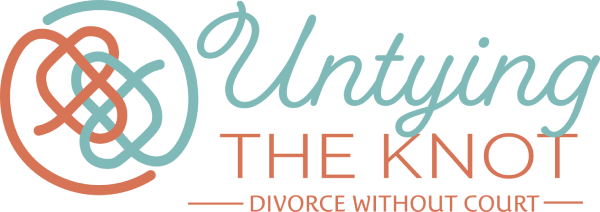- About Us
- Services▼
- Knowledge Library▼
- Stand-Alone Services▼
- Attorney Preparation of a Parenting Plan
- Attorney Preparation of Child Support Guidelines Worksheet
- Marital Settlement Agreement Preparation Services
- Attorney Review and Explanation of Your Marital Settlement Agreement, Parenting Plan And/or Final Judgment
- Attend Mediation With You as Legal Counsel
- 30 Minute Attorney Appointment
- Prep Financial Affidavit and Assist in Mandatory Financial Disclosure
- Divorce Mediation by the Hour
- Prepare All Initial Paperwork to File Your Divorce
- Served? Respond to a Divorce With Professional Guidance
- Blog
- Testimonials
- For Attorneys
- Contact Us
What Do Mediators Do?

What do mediators do? In the field of dispute resolution, mediators serve as neutral third parties who help conflicting parties achieve a resolution. Their role is pivotal in guiding negotiations and fostering a collaborative environment. Here’s a quick overview of their responsibilities:
- Facilitate Communication: Mediators encourage open dialogue between parties, helping them express their concerns and priorities.
- Identify Issues: By understanding each side’s perspectives, mediators clarify disputes and identify underlying issues.
- Explore Solutions: They present potential solutions without imposing them, allowing parties to consider options that suit their needs.
- Maintain Neutrality: A mediator does not take sides or make decisions for the parties, instead supporting them in reaching a mutual agreement.
Mediation is an art that combines communication, patience, and understanding. Unlike court proceedings that often escalate tensions, mediation offers a more amicable path toward resolution. As Sandra Day O’Connor aptly put it, courts should be the place where disputes end, not begin.
Through mediation, parties can resolve conflicts efficiently, avoiding the costs and complexities of litigation. This approach accepts the potential to transform disputes into productive conversations that lead to mutually beneficial outcomes.
The Role of a Mediator
Mediators are the unsung heroes of conflict resolution. They are neutral facilitators who guide discussions and negotiations, helping parties find common ground. Let’s explore what mediators do to make this happen.
Neutral Facilitator
The mediator’s primary role is to remain unbiased. They don’t take sides or make decisions. Instead, they create a safe space where everyone feels heard. This neutrality is crucial because it builds trust among all parties involved.
Communication
Effective communication is the heart of mediation. Mediators encourage open and honest dialogue. They help parties articulate their thoughts and feelings clearly. This process often reveals hidden issues that need addressing.
- Open Dialogue: Mediators ask questions that prompt parties to share their perspectives. This can lead to breakthroughs in understanding.
- Active Listening: Mediators listen intently, ensuring that each party feels heard and respected. This can defuse tension and build rapport.
Negotiation
Negotiation is where mediators shine. They guide parties through the negotiation process, helping them explore options and reach agreements.
- Exploring Options: Mediators suggest creative solutions that parties might not have considered. This can open new paths to resolution.
- Encouraging Compromise: Mediators help parties find middle ground. They remind everyone that compromise is key to a successful outcome.
The art of mediation lies in changing potential conflicts into opportunities for collaboration. By focusing on communication and negotiation, mediators help parties avoid the courtroom and find solutions that work for everyone involved. This approach not only saves time and money but also preserves relationships, making it a win-win for all parties.
What Do Mediators Do in the Mediation Process?
Mediators play an essential role in guiding parties through the mediation process. They use a structured approach to help resolve conflicts. Let’s explore the key steps involved: opening statements, joint discussion, private caucuses, and joint negotiation.
Mediator’s Opening Statement
The process begins with the mediator’s opening statement. This is where the mediator explains the rules and goals of the mediation. They set the tone for cooperation and clarify their role as a neutral facilitator.
- Purpose: Establish ground rules and encourage open communication.
- Neutral Ground: Reinforces that the mediator is not there to judge but to help find a resolution.
Disputants’ Opening Statements
Next, each party presents its opening statement. This is an opportunity to share their side of the story and express their concerns.
- Opportunity to Speak: Each party outlines its issues and what they hope to achieve.
- Listening is Key: All parties must listen actively, as understanding each other’s perspectives is vital.
Joint Discussion
After opening statements, the mediator facilitates a joint discussion. This is where parties can address each other directly, guided by the mediator.
- Communication: Encourages dialogue and understanding between parties.
- Mediator’s Role: The mediator helps keep the discussion productive and focused on resolving the dispute.
Private Caucuses
The mediator may hold private caucuses, which are separate meetings with each party. These sessions allow for more candid discussions.
- Confidentiality: Parties can speak openly without the other party present.
- Strategy and Feedback: The mediator provides feedback and explores possible solutions.
Joint Negotiation
Once private caucuses conclude, parties come back together for joint negotiation. This is where the real problem-solving happens.
- Finding Common Ground: Parties work collaboratively to reach a mutually acceptable solution.
- Flexibility: Being open to new ideas can lead to creative solutions.
Closure
Finally, the mediation process ends with closure. If an agreement is reached, the mediator helps draft a settlement agreement.
- Agreement: The agreement is legally binding and outlines the terms agreed upon.
- No Resolution: If no agreement is reached, parties may choose to pursue other options, such as litigation.
Mediators are skilled at navigating these steps to help parties find a resolution. By fostering open communication and encouraging collaboration, they turn disputes into opportunities for agreement. This process not only saves time and money but also helps maintain relationships, making it a valuable alternative to litigation.
Benefits and Downsides of Mediation
Mediation offers a range of benefits that make it an attractive option for resolving disputes. However, it also has its downsides. Let’s explore both sides.
Cost-Effective
One of the biggest advantages of mediation is its cost-effectiveness. Compared to traditional litigation, mediation is much cheaper. Litigation can be expensive due to court fees, attorney fees, and other related costs. Mediation, on the other hand, often involves fewer expenses.
- Lower Costs: Parties save money by avoiding lengthy court battles.
- Quicker Resolution: Mediation can be completed in a shorter time frame, reducing overall costs.
Confidentiality
Mediation is a private process. What happens in mediation stays in mediation. This confidentiality encourages open and honest communication.
- Privacy: Parties can discuss sensitive issues without fear of public exposure.
- Trust Building: Knowing that discussions are confidential can foster trust among parties.
Compromise
Mediation encourages compromise, which can be both a benefit and a downside. The process is designed to help parties find a middle ground.
- Collaborative Solutions: Parties work together to create mutually acceptable outcomes.
- Shared Control: Unlike in court, where a judge makes the final decision, parties in mediation have control over the outcome.
However, compromise means that parties might have to give up some of their demands. This can be challenging if one or both parties are unwilling to budge.
Litigation Costs
While mediation can reduce litigation costs, it doesn’t eliminate them. If mediation fails, parties may still end up in court.
- Potential for Additional Costs: If mediation doesn’t lead to a resolution, the costs saved may be negated by subsequent litigation expenses.
- Uncertainty: There’s no guarantee that mediation will result in a settlement.
Mediation offers a cost-effective and confidential way to resolve disputes. However, it requires a willingness to compromise and carries the risk of additional costs if it fails. Despite these downsides, many find mediation to be a valuable tool for resolving conflicts without the need for lengthy litigation.
Frequently Asked Questions about Mediation
What is the main purpose of a mediator?
The main purpose of a mediator is to facilitate communication between parties in conflict. Mediators act as neutral third parties who intervene to help disputants resolve. They don’t take sides or make decisions. Instead, they provide a safe space for open dialogue and guide the parties toward a mutually agreeable solution.
Mediators also assist in identifying the core issues at play. This helps each side understand the other’s perspective, which is crucial for finding common ground.
What are the roles and duties of a mediator?
Mediators have several key roles and duties:
- Neutral Intervention: Mediators step in as unbiased facilitators to help parties communicate effectively.
- Communication Facilitation: They ensure that each party has the opportunity to express their views and listen to the other side. This helps prevent misunderstandings and promotes clarity.
- Issue Identification: Mediators help pinpoint the main issues causing the conflict. This focus is essential for finding workable solutions.
Through these roles, mediators aim to create an environment where parties feel heard and understood. This can lead to more productive negotiations and, ultimately, resolution.
Is there a downside to mediation?
While mediation offers many benefits, there are some potential downsides to consider:
- Compromise Necessity: Mediation often requires both parties to compromise. This might mean not getting everything you initially wanted, which can be challenging for some.
- Potential Additional Costs: Although generally more cost-effective than litigation, mediation can still incur expenses. If multiple sessions are needed, costs can add up.
Despite these potential downsides, mediation remains a valuable tool for resolving disputes without the need for a courtroom. It encourages collaboration and creative problem-solving, paving the way for solutions that work for everyone involved.
Contact Untying the Knot For Divorce Mediation
At Untying The Knot, we believe in offering a courtroom-free experience for those navigating the complexities of divorce. Our Florida divorce mediation services are designed to provide a smoother, more amicable process for couples looking to separate without the added stress and expense of traditional litigation.
Mediation offers a unique approach to resolving disputes. It focuses on collaboration and understanding, helping both parties find common ground and agree on solutions that work for everyone involved. This not only reduces conflict but also promotes a healthier environment for any children involved, fostering a cooperative co-parenting relationship.
If you’re ready to explore how mediation can work for you, contact us today and let us help you find a path forward that suits your unique situation.
Tags:
Archive
Categories
Tags
- changing your name
- co-parenting
- divorce by publication
- divorce mediation
- divorce papers
- Divorce Without Court
- Equitable Distribution
- Financial Considerations in Divorce
- last name change
- lengthy divorce
- lengthy divorces
- long divorces
- marital assets
- name change
- no-fault divorce
- relocating your children
- spousal support
- spousal support qualifications
- types of divorces
- types of marital assets
WHEN YOU WANT TO UNTIE THE KNOT, BUT DON'T WANT TO TIE YOURSELVES UP DOING IT
At Untying The Knot, we focus on a kinder, gentler divorce – to allow you to move on with your lives more quickly, less expensively and with way less drama.
